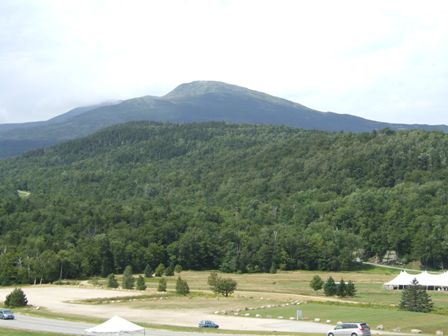 |
Mountains are not common in the eastern half of the US, at least not in
comparison to the west. This is Mount Washington, 6288ft high, in amongst the White
Mountains in New Hampshire. |
| Some enterprising soul built a road all the way to the
top and so created one of the first tourist attractions at the turn of the
century. Today you can drive up but not in a 7.5ton 32ft RV. We took the
stage line tour which today uses minibuses. They do modify them with low
ratio gearboxes and back axles and oil coolers to handles the unusual
working pattern. | 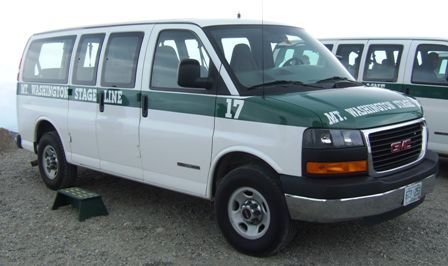 |
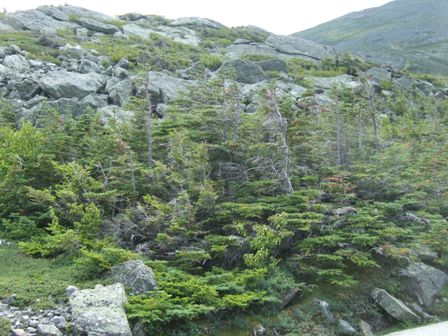 |
The road climbs about 5000ft in 7.5 miles and passes through four distinctly
different climactic regions. Here at the lower levels we have recognisable
trees, mainly white pine. |
| Many walkers climb the trails and some do it even in
winter. These stone cairns guide them and enable them to find the paths when
the snow is on the ground. They are fairly closely spaced because they also
are often in cloud here. | 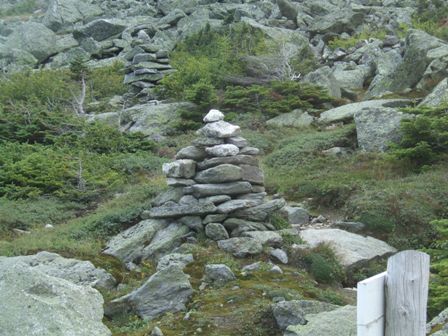 |
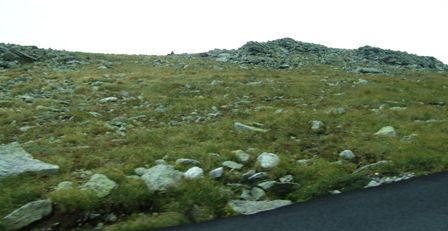 |
At the higher elevations the trees disappear altogether and you are left
with an alpine tundra landscape. |
| At the top is an observation platform (if you can
stand the wind), cafes and gift shops together with an array of technical
stations for weather, telephone, TV and radio. | 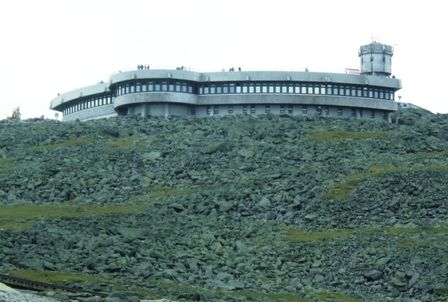 |
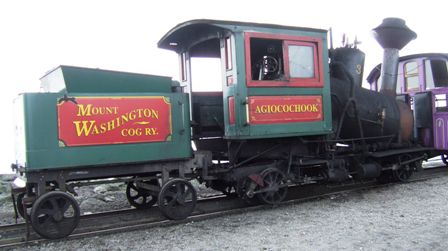 |
There is also an ancient cog railway which takes tourists to the top. Each
engine pushes a single carriage to the top and is driven by a cog wheel
engaged in a central toothed track. You can see how steep it is from the
angle of the boiler. Agiocochook is Mt Washington's aboriginal name
meaning 'Home of the Great Spirit'. |
| These are pretty ancient trains but they have been in
service since 1869. The track runs for 3.1 miles at an average gradient of 37%
which
makes it the second steepest in the world. They use a ton of coal and 1000
gallons of water on each trip. | 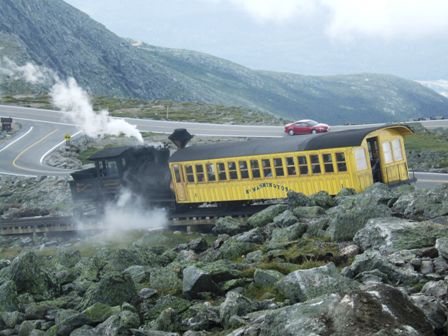 |
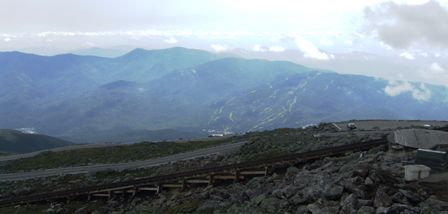 |
On a clear day you are supposed to be able to see over 200 miles, far enough
to see the sea. Today the boards said visibility was 55 miles but I doubt
it. Atmospheric pollution and the worsening weather made that unlikely. But
the views were still amazing. |
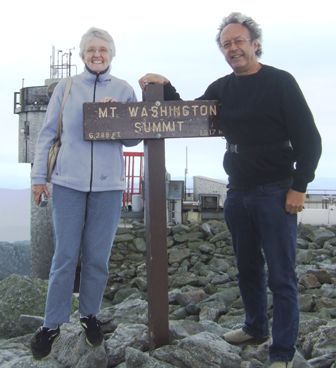 |
One of the rare photographs of us just to prove we did reach the summit
which is actually on a little pile of rocks. It was cold! And windy! |
| This is the weather station where the highest wind
speed ever recorded was measured at 237 mph. At that point the anemometer
broke so they don't really know how much higher it would have gone. Mt Washington is at the
point where three
weather patterns collide and is reputed to have the worst weather in the world. | 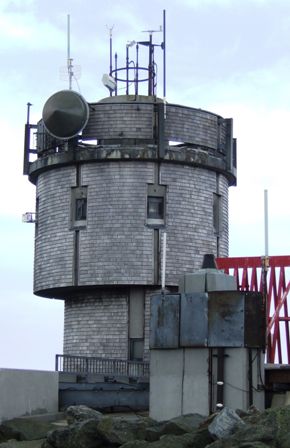 |
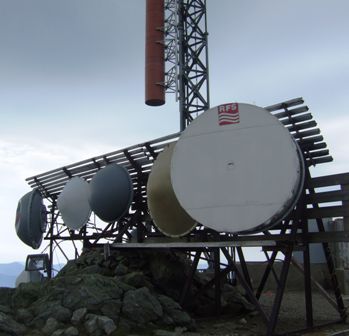 |
There are also numerous aerials and transponders for telecommunications, TV
and radio. Even they are partially shielded from the elements for
protection. |
| There is the original building built on the summit
which today serves as a cafe and museum. This was their ancient stove. In
winter they could well have been trapped up here for weeks. | 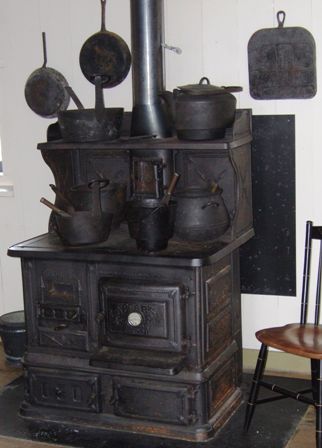 |
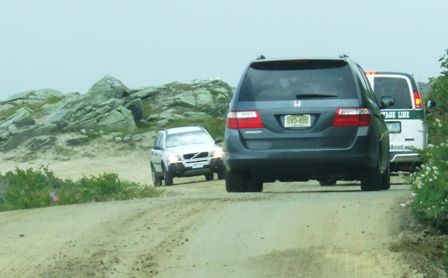 |
Much of the road is tarmac'd but the higher sections are gravel. Apparently this is
easier to maintain under the prevalent weather conditions. |
| The photo should show the clouds below us but as so
often it is not as obvious as it was when it was taken. | 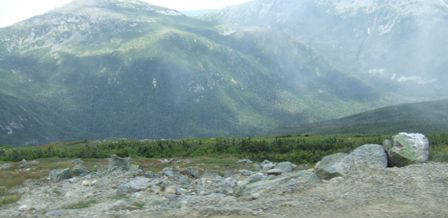 |
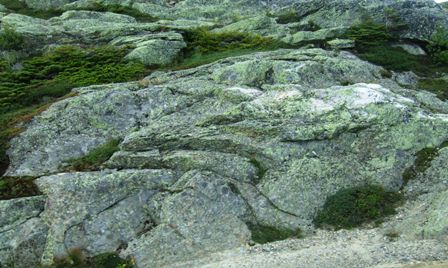 |
The rock formations show evidence of ancient lava flows. These are pretty
old rocks!. |
| Coming down, the trees don't exist, then they are more
like bushes and they slowly get larger. They reckon that every 1000 ft of
altitude creates a climate change equivalent to going 250 miles further
north. Thus here we are in Labrador! | 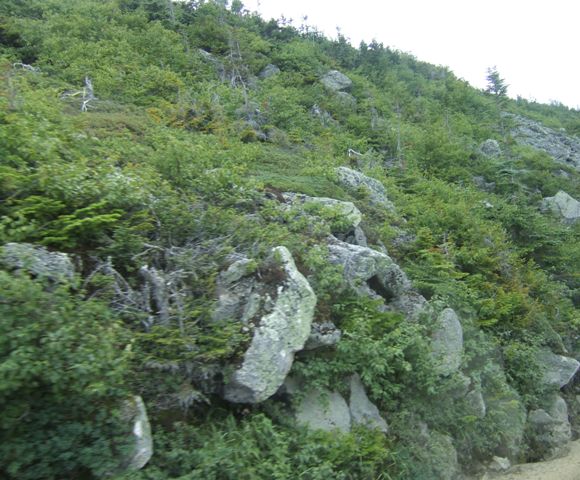 |
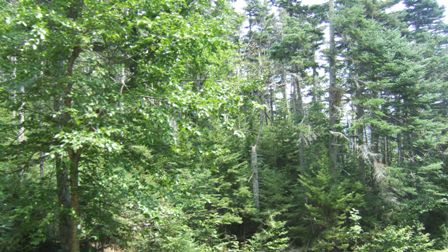 |
Finally one returns to the normal trees such as cover most of New Hampshire. |
| A museum at the bottom displays the different
transport which has been used over the years. This was the coach belonging
to Fabyan house (a grand hotel) which used this elegant 'Concord' stage to
carry people around the mountains with a team of six horses. | 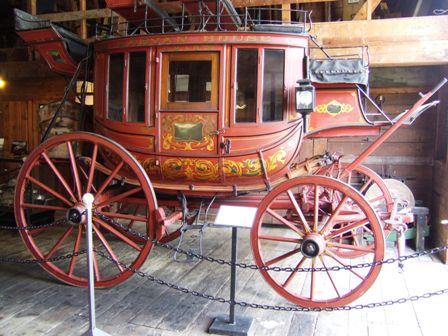 |
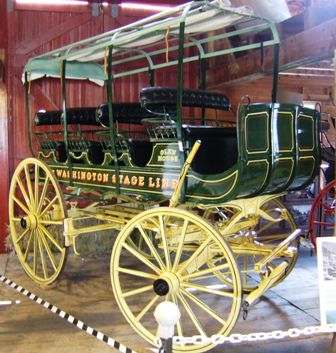 |
This lightweight carriage was built by the same firm to carry 11 passengers
up the road, taking over four hours with six horses to travel the 7 miles.
It was very unstable. It had thick leather brake linings which worked
against the back wheels and which had to be replaced after each trip. |
| A 1938 Ford 'Woodie' station wagon with an 85hp V8
engine (one of the first). It had a three speed transmission and modified
hydraulic brakes. The sidewalls are birch and maple. | 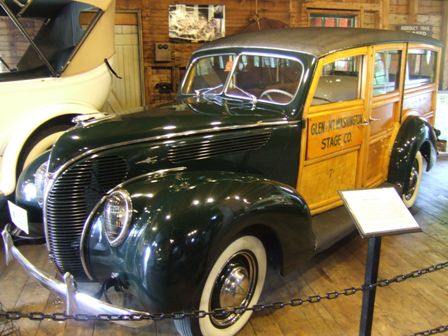 |
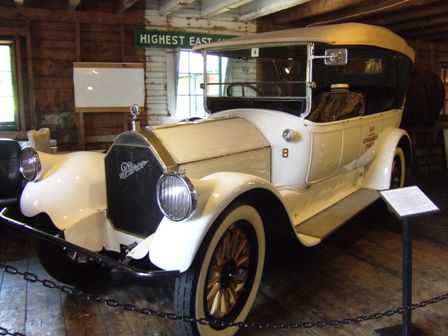 |
This is a 1918 Pierce Arrow, one of the most prestigious cars of its time.
It had a six cylinder 45 hp engine. The headlights built into the fenders
were a Pierce trademark at the time. It carried 7 passengers. |
| Frank Sprongl is the current hillclimb champion with a
time of 6 minutes 42 seconds in 1998. | 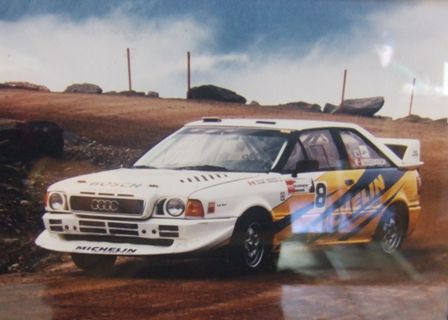 |
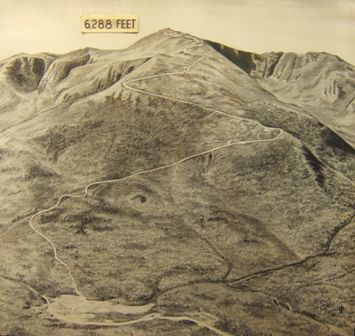 |
A map to show where the road goes since you can't see it for trees or
clouds. |
| Early tourists in the 1800s pose for a photograph. | 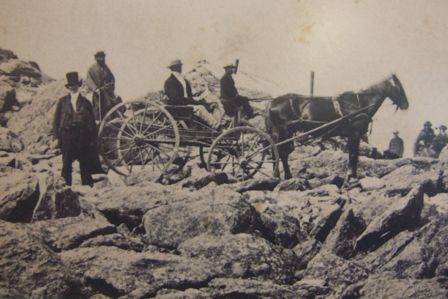 |
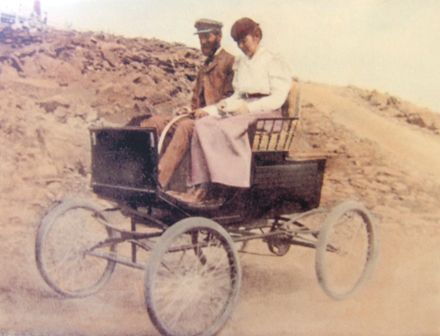 |
Then came the horseless carriage!. This is the Stanley Locomobile which made
the first climb of the mountain road in 1899. It cost about $600. This is
Freelan Oscar and Flora Stanley. President Mckinley later featured in a
promotional photograph doing the same trip. |
| Just a reminder of the unique flora you can find in
this very diverse environment. |  |
|